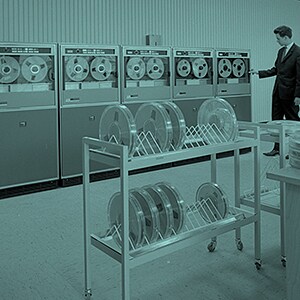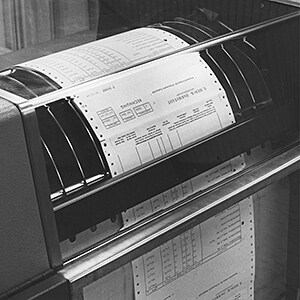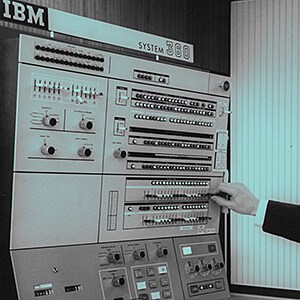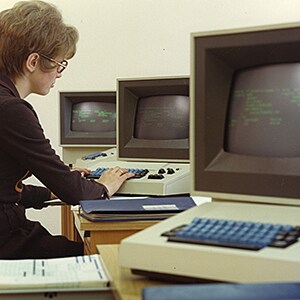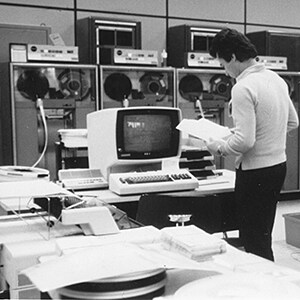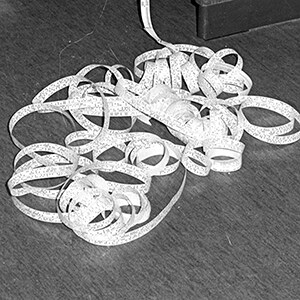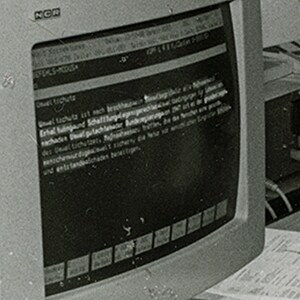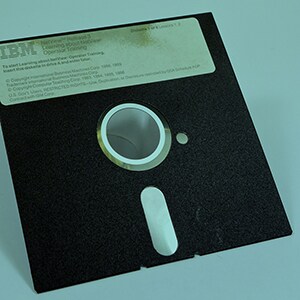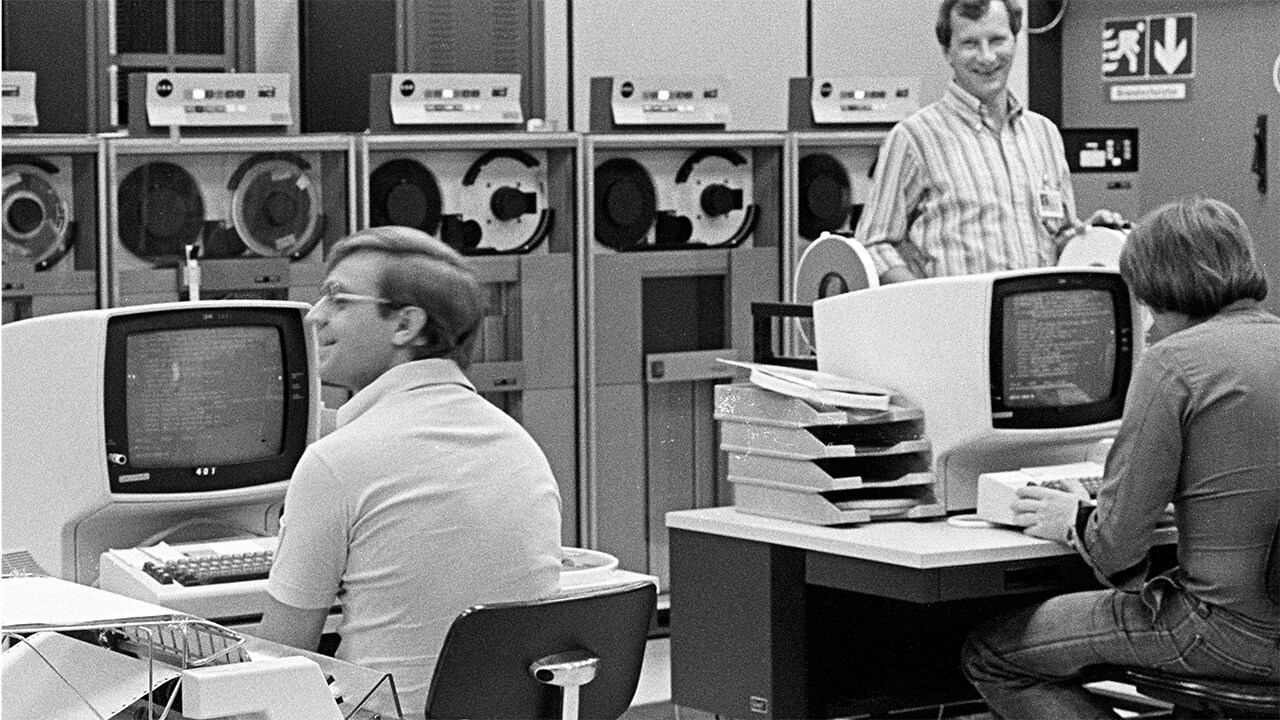
»Information technology has become relatively inexpensive. […] On the other hand, the absolute cost of supplying information is rising.«
Works Council, Technology Committee, 1988
»50% time savings = 100% profit, absolutely reliable, always ready to record.« This claim sounds modern, and yet it dates back to the 1920s. It is advertising copy for a dictation machine. Ever more, faster, and efficient – an ambition that also characterizes this era in many different ways. The film Metropolis reflects this leitmotif in powerful images. The question as to man’s place in a world dominated by technology is already being asked.
Zeros and ones, bit after bit, form the building blocks of modern communication. Grouped into bytes, they stand for letters, numbers, or whole worlds of color. Gradually, a new form of perception is emerging for the users, and in turn changing the ways in which people communicate. The introduction of personal computers (PCs) in larger departments at the company, such as »Technology Purchasing«, is an example: Starting in 1984, this unit can process its more than 45,000 orders per year much faster, even though computers are only used to process one-third of all items. For a wide range of special orders, no standards exist.
The introduction of trade and communication standards, triggered by the dawn of digitalization, has only just begun. Only five years later, the third generation of PCs is already introduced. Hard drive capacity is now up to 40 MB. A new removable storage medium, the 3.5-inch diskette, quadruples the capacity of its predecessor, reaching 1.44 MB. The exchange of data takes on entirely new dimensions.
Connecting people and places in digital networks is another major topic. In 1982, data processing experts from eight countries meet in Darmstadt. The company subsidiaries have been taking the development of various programs into their own hands. A common approach must be found in order to allow digital communication. Five years later, a similar meeting is held, and the goal is once again to find common ground. In 1994, »X.400« becomes the gateway to the world. This international messaging standard connects user groups both inside and outside the company. Texts, graphics and programs stored using X.400 can be transmitted worldwide, and, incontrast to faxes, processed directly by the recipient. In 1996, the next advance occurs. The employee newspaper reports: »Video conferencing makes expensive travel superfluous«. In the following years, the longterm savings effect of technical tools will continue to contrast with the unique advantages of direct personal contact.
In 1967, the Punch Card Department becomes Central Data Processing. Magnetic tapes are the new data storage media – alongside the punch cards. Information on over 5,000 items fits on 300 meters of tape. The heart of the system is a versatile and connectable mainframe computer from IBM. Thehigh-speed printers achieve 600 lines per minute.
At the start of the 1970s, electronic data is growing in importance in all areas – whether for chromatography or as part of a sales information system. In 1979, a new computer center is set up to take into account the rapid advances.
In 1980, the company installs a computer-driven telex system. Endless streams of tape are now a thing of the past. PCs are becoming increasingly common. New training rooms are set up. In 1988, the Merck KGaA, Darmstadt, Germany, catalogue of chemicals, reagents and diagnostics is issued in digital form for the first time – on a diskette.

